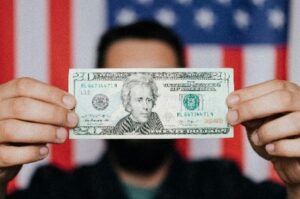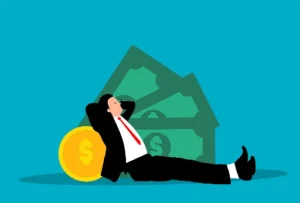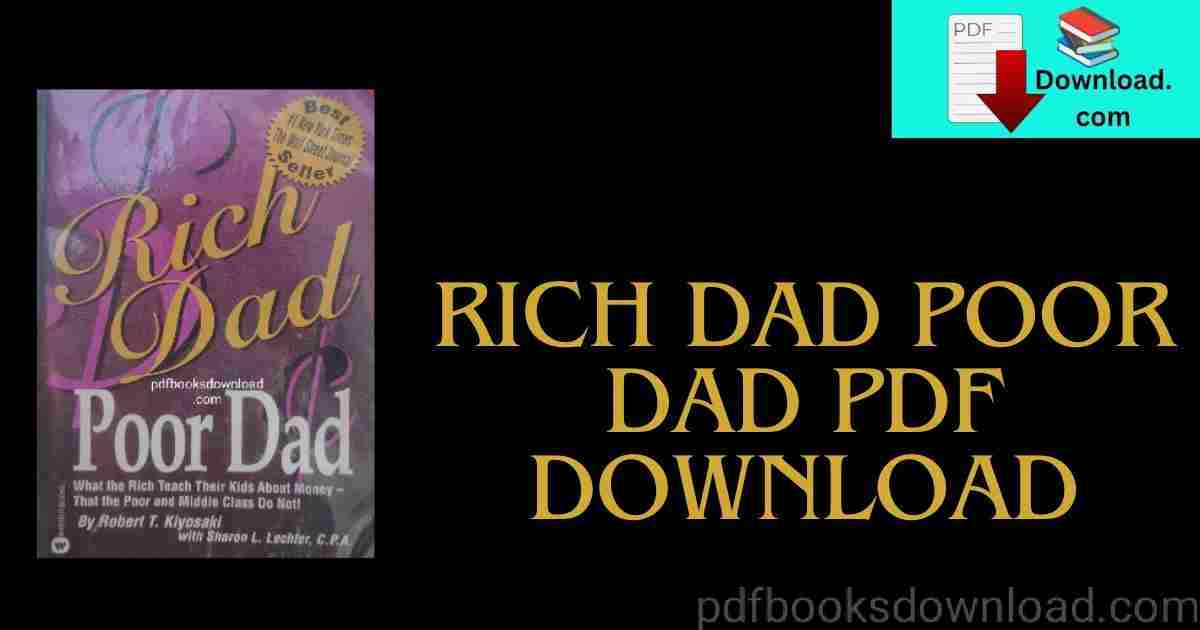| Name of Book | Rich Dad Poor Dad |
| Author | Robert Kiyosaki |
| PDF Size | 9.5 MB |
| No of Pages | 215 |
| Language | English |
Five Reasons To Read Rich Dad Poor Dad PDF
Financial Education: “Rich Dad Poor Dad” provides valuable insights into financial literacy, teaching readers about the importance of assets, liabilities, and passive income. It encourages a mindset shift from simply working for money to making money work for you.
Investment Mindset: Kiyosaki shares practical advice on investing in real estate, stocks, and entrepreneurship. Readers can learn how to evaluate investment opportunities and make informed decisions to build wealth over time.
Debunking Myths: The book challenges common myths about money and success, such as the belief that a high income guarantees financial security. Kiyosaki’s personal anecdotes and experiences offer a fresh perspective on wealth accumulation.
Mindset Shift & Inspiration: Through contrasting the financial philosophies of his “rich dad” and “poor dad,” Kiyosaki inspires readers to adopt a mindset of abundance and entrepreneurship. The book emphasizes the importance of taking calculated risks and continuously learning in order to achieve financial independence.His story serves as inspiration for readers who aspire to break free from financial struggles and achieve financial freedom.
Practical Strategies: “Rich Dad Poor Dad” offers practical strategies for managing personal finances, reducing debt, and building passive income streams. Readers can apply these principles to their own lives to improve their financial well-being and achieve their long-term goals.

Rich Dad Poor Dad Summary
Introduction
“Rich Dad Poor Dad” by Robert Kiyosaki is a groundbreaking book that challenges conventional wisdom about money and wealth. Through the contrasting experiences of his own “rich dad” and “poor dad,” Kiyosaki imparts invaluable lessons on financial education, asset building, and mindset. In this article, we’ll discover the key concepts of the book and explore how they can empower readers to achieve financial independence.
The Story of Two Dads
Kiyosaki introduces readers to his two influential father figures: his biological father, the “poor dad,” and the father of his childhood best friend, the “rich dad.” While both men were successful in their own right, they had vastly different approaches to money and life. The “poor dad” believed in the traditional path of working hard, getting a good education, and relying on job security. In contrast, the “rich dad” emphasized the importance of financial literacy, entrepreneurship, and investing in assets.
The Importance of Financial Literacy
One of the central themes of “Rich Dad Poor Dad” is the significance of financial education. Kiyosaki argues that schools often fail to teach students essential money management skills, leaving many people ill-equipped to navigate the complexities of the modern financial world. He encourages readers to take control of their financial education by seeking out knowledge about investing, taxes, and cash flow.
The Difference Between Assets and Liabilities
Kiyosaki introduces the concept of assets and liabilities, which are key components of his financial philosophy. According to Kiyosaki, assets are things that put money in your pocket, such as real estate, stocks, or businesses. Liabilities, on the other hand, are things that take money out of your pocket, such as mortgages, car payments, or credit card debt. By understanding this distinction, readers can make smarter financial decisions and focus on acquiring assets that generate passive income.
Building Passive Income Streams
One of the key goals of “Rich Dad Poor Dad” is to help readers break free from the “rat race” of working paycheck to paycheck. Kiyosaki advocates for building passive income streams, which provide ongoing revenue with minimal effort. This can be achieved through investments in real estate, stocks, bonds, or entrepreneurship. By generating passive income, individuals can achieve greater financial security and freedom.
The Importance of Entrepreneurship
While traditional employment can provide stability, Kiyosaki contends that true financial freedom often comes from entrepreneurship. He encourages readers to explore opportunities for starting their own businesses or investing in entrepreneurial ventures, emphasizing the potential for unlimited income and personal fulfillment.
The Power of Mindset
Beyond financial strategies, “Rich Dad Poor Dad” also emphasizes the importance of mindset in achieving wealth and success. Kiyosaki encourages readers to adopt a mindset of abundance, curiosity, and resilience. He urges them to overcome fear, take calculated risks, and learn from failures. By cultivating a positive mindset and embracing lifelong learning, individuals can unlock their full potential and create the life they desire.
Debt as a Tool for Wealth Creation
Kiyosaki challenges conventional wisdom by advocating for the strategic use of debt to build wealth. He distinguishes between “good debt” that generates income or appreciates in value, such as mortgage debt on investment properties, and “bad debt” that results from excessive consumer spending.
Legacy and Giving Back
While wealth accumulation is a central theme, “Rich Dad Poor Dad” also stresses the importance of using wealth to make a positive impact and leave a legacy. Kiyosaki encourages readers to consider their broader purpose and to give back to their communities or support causes they believe in.
Conclusion
“Rich Dad Poor Dad” is more than just a book about money; it’s a manifesto for financial empowerment and personal growth. Through engaging storytelling and practical advice, Robert Kiyosaki challenges readers to rethink their beliefs about wealth and success. By applying the lessons of “Rich Dad Poor Dad,” anyone can take control of their financial future and embark on the path to financial freedom.To learn more about Rich Dad Poor Dad Click

About The Author Of Rich Dad Poor Dad
Robert Kiyosaki, the author of the groundbreaking book “Rich Dad Poor Dad,” was born on April 8, 1947, in Hilo, Hawaii. His childhood was marked by the influence of two father figures: his biological father, Ralph H. Kiyosaki (whom he refers to as “Poor Dad”), and his best friend’s father, whom he calls “Rich Dad.”
Growing up, Kiyosaki observed the contrasting financial philosophies of the two men. While his biological father, an academic and government employee, believed in traditional education and job security, Rich Dad, a successful entrepreneur, emphasized the importance of financial literacy, investing, and entrepreneurship.
After graduating from high school, Kiyosaki attended the United States Merchant Marine Academy and later served in the Vietnam War as a helicopter gunship pilot in the Marine Corps. Following his military service, he delved into various entrepreneurial ventures, including starting his own business, which experienced both success and failure.
In the 1980s, Kiyosaki began his journey into real estate investing and financial education. He co-founded an education company called Cashflow Technologies, Inc., which aimed to teach individuals about financial literacy and investment strategies. Through his own experiences and teachings, Kiyosaki developed the principles outlined in “Rich Dad Poor Dad.”
Published in 1997, “Rich Dad Poor Dad” became an instant sensation, challenging conventional beliefs about money and wealth accumulation. The book advocates for financial independence through investing in assets, building passive income streams, and cultivating a mindset of entrepreneurship.
Since the success of “Rich Dad Poor Dad,” Kiyosaki has authored numerous other books, conducted seminars, and appeared as a guest speaker on various platforms, sharing his insights on finance, investing, and personal development. He has also faced criticism and controversy regarding the authenticity of the characters and events depicted in his book, but he remains a prominent figure in the realm of financial education.
Beyond his writing and speaking engagements, Kiyosaki is also an active investor, with interests in real estate, stocks, and other business ventures. He continues to advocate for financial education as a means of empowering individuals to take control of their financial futures and achieve greater wealth and freedom.
Rich Dad Poor Dad PDF Free Download Related Books
The Richest Man In Babylon PDF George S. Clason Free Download
The Little Book Of Common Sense Investing PDF John C. Bogle Free Download
FAQ’s About Rich Dad Poor Dad

What is “Rich Dad Poor Dad” about?
“Rich Dad Poor Dad” is a personal finance book that shares the author’s experiences growing up with two father figures—one biological (Poor Dad) and one a friend’s father (Rich Dad). It explores the differences in their mindsets and financial philosophies, emphasizing the importance of financial education and entrepreneurship.
Is “Rich Dad Poor Dad” a real story story?
While the book is based on the author’s life experiences and lessons learned from two influential father figures, some details and characters are fictionalized for storytelling purposes.
What are the six principles of Rich Dad Poor Dad?
The six principles outlined in “Rich Dad Poor Dad” are: 1) The rich don’t work for money, 2) Financial education is essential, 3) Mind your own business, 4) The power of leverage, 5) The rich invent money, and 6) Work to learn, don’t work for money.
Is “Rich Dad Poor Dad” suitable for beginners in personal finance?
Yes, the book is written in a straightforward and accessible manner, making it suitable for beginners who want to learn more about personal finance, investing, and wealth building.
Is “Rich Dad Poor Dad” relevant for readers outside the United States?
Yes, the principles and lessons taught in “Rich Dad Poor Dad” are applicable globally, regardless of geographical location. However, some examples and references may be more relevant to the U.S. financial system.
What is the main point of Lesson 4 of Rich Dad Poor Dad?
Lesson 4 of “Rich Dad Poor Dad” is about the importance of understanding taxes and how they impact your finances. It emphasizes the need to educate yourself about tax laws and to use them to your advantage to build wealth.
Are there any criticisms of “Rich Dad Poor Dad”?
Some people say the book makes complicated money ideas too simple and encourages taking big risks with investments. Also, some wonder if the author’s story and some parts of the book are true.
Are there follow-up books or resources recommended for readers of “Rich Dad Poor Dad”?
Yes, Robert Kiyosaki has written several follow-up books, such as “Cashflow Quadrant,” “Rich Dad’s Guide to Investing,” and “Rich Dad’s Increase Your Financial IQ,” which further expand on the principles introduced in “Rich Dad Poor Dad.” Additionally, there are workshops and seminars based on the book’s teachings.
Thank You! Dear Reader 💖
